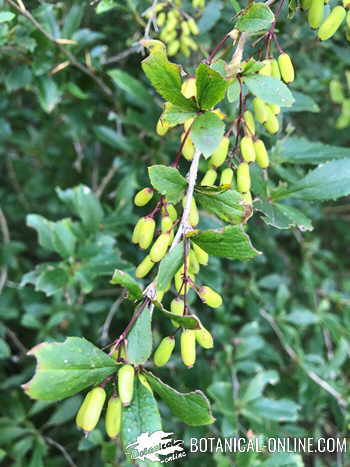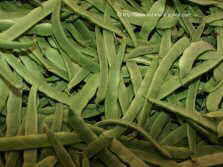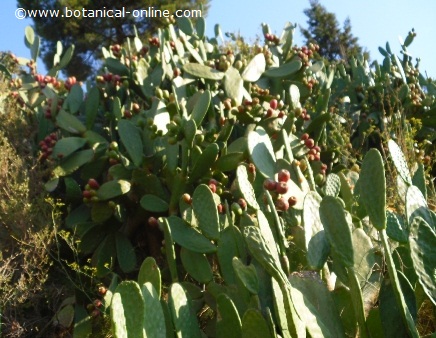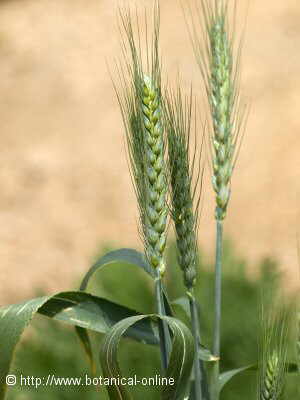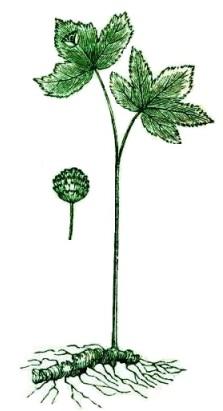Contents
Benefits of barberry
Barberry as a medicinal plant
Barberry (Berberis vulgaris L.) is a plant native to Europe and the Caucasus that is used in herbal medicine for its antibacterial, antirheumatic, tonic, astringent, diuretic, cholagogue, expectorant, hepatic, laxative and purgative properties.
The active principles of the plant are alkaloids or bitter principles, mainly berberine. This component can be toxic in high doses, so the plant should be used under medical supervision. Berberine has also been used to overcome morphine addiction.
Uses of barberry fruits
The fruits do not contain alkaloids and therefore have different applications than the rest of the plant. They are used in food, have an acidic taste and are used for jams and preserves. They are considered anti-anemic, anti-scorbutic (they have a high iron and vitamin C content) and refreshing.
Due to its properties, barberry may be indicated in the following cases:
INTERNAL USE
Digestive properties of barberry
Barberry is a plant with tonic properties for the stomach that stimulate the appetite and promote digestion.
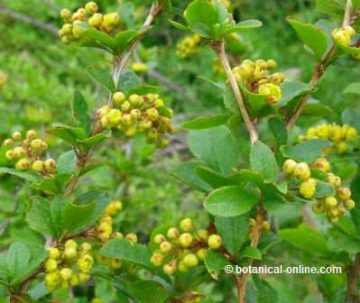
Berberine (an alkaloid found in the bark and leaves) acts as a stomach tonic in small doses and has a cholagogue effect. It is suitable for helping to digest very large meals or rich in fat. Berberine stimulates the production of saliva, gastric juices and bile secretions. (Infusion of 8 g of dried leaves per cup, 30 minutes before meals. Infusion of 5 g of bark per cup before meals).
Barberry for the liver
Plants rich in berberine such as barberry are used for their choleretic properties. They help bile evacuation, decongest the liver and therefore act as a digestive tonic and liver purifier.
In low doses, barberry is used as a biliary tonic by improving the flow of bile and conditions that affect this organ (jaundice, cirrhosis, etc.).
An scientific study on animals demonstrated the efficacy of berberine in preventing liver damage, suggesting that it may be effective in protecting the liver in humans. (Study published by the University of Rijeca, Sveučilište u Rijeci, Croatia).
Antibiotic properties of barberry
This plant and especially its extract, berberine, is an excellent natural antibiotic. Barberry alkaloids have shown antibiotic activity in in vitro studies, against a wide range of bacteria such as Chlamydia (it causes diseases such as gonorrhea and trachoma), E. coli, Salmonella typhi (food poisoning) and Entamoeba histolytica (amoebiasis). The ethanolic extract of the plant is used in some lotions and pharmaceutical preparations.
The effect of berberine (extracted from barberry or other plants) has also been described for Trichomonas vaginalis, Toxocara canis, Leishmania donovani, Leishmania mexicana, Eimeria papillata, Leishmania tropica and malaria parasites such as Plasmodium vivax and Plasmodium falciparum.
The first documented use of berberine was in 1933 for the treatment of trachoma (an infectious eye disease caused by bacteria of the species Chlamydia trachomatis).
Barberry for digestive disorders
- Mouth conditions: The plant is antibacterial and stimulates saliva production. These properties help protect against tooth decay and bad breath or halitosis. It has vasoconstrictive and anti-inflammatory effects that help treat bleeding gums, gingivitis or mouth sores (Infusion of 8 g of dried leaves per cup, 30 minutes before meals. Infusion of 5 g of bark per cup before meals).
- Intestinal infections: Due to its purgative effects, barberry has been used to treat enteric infections, especially infections of bacterial origin. (Infusion of 8 g of dried leaves per cup, 30 minutes before meals. Infusion of 5 g of bark per cup before meals).
- Cystitis: Berberine-rich plants are traditionally used for the treatment of cystitis. (Infusion of 8 g of dried leaves per cup) (Infusion of 5 g of bark per cup before meals).
Barberry for diabetes
Berberine has been studied for its antidiabetic effects as a potential drug for type 2 diabetes (non-insulin dependent). It is a very abundant alkaloid in barberry bark and leaves with hypoglycemic properties. Several studies have compared the effectiveness of berberine (barberry extract) in lowering blood sugar, which is similar to metformin, one of the most widely used oral antidiabetic drugs to control diabetes.
Due to its alkaloid content, barberry infusions could help improve diabetes. (It is mandatory to consult with the doctor about the appropriateness of the treatment. Infusion of 8 g of dried leaves per cup, 30 minutes before meals. Infusion of 5 g of bark per cup before meals) (Do not combine with antidiabetic medications without consulting your endocrinologist).
The plant also has fever-reducing properties and is used as an antipyretic. (Infusion of 8 g of dried leaves per cup, 30 minutes before meals. Infusion of 5 g of bark per cup before meals).
Other uses of barberry

Unripe fruits of barberry. When ripe, they are red in colour and resemble rose hips Cholesterol: Berberine has cholesterol-lowering properties. One study concluded that berberine, in addition to positive effects in controlling diabetes, has beneficial properties on fat metabolism and cholesterol control. * See: Berberine for cholesterol
- Hypertension: Berberine has antihypertensive properties (Decoction of the root and bark)
- Gout: Due to its diuretic properties, it is effective in the natural treatment of hyperuricemia and in lowering uric acid levels (Decoction of the root and bark)
- Nephritis: It acts as an antiseptic and anti-inflammatory (Decoction of the root and bark)
- Anemia: Barberry berries are very rich in iron. Their iron content per 100 g is 20 mg, that is, more than 100% of the recommended daily amount. In addition, due to their vitamin C content, they help increase iron absorption. (More information).
![]() More information on the barberry plant and berberine active principle
More information on the barberry plant and berberine active principle

